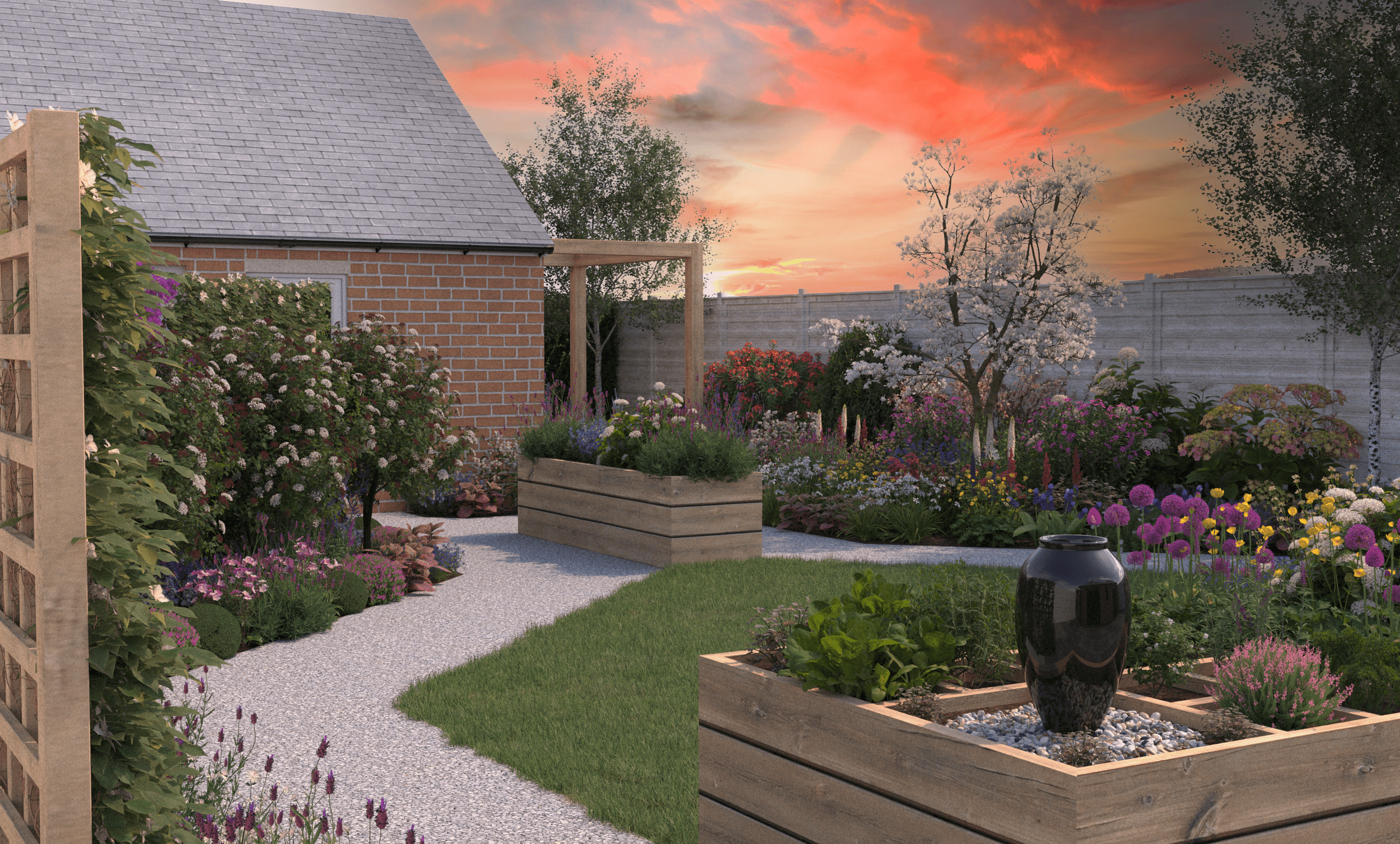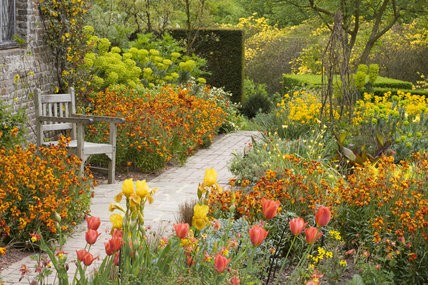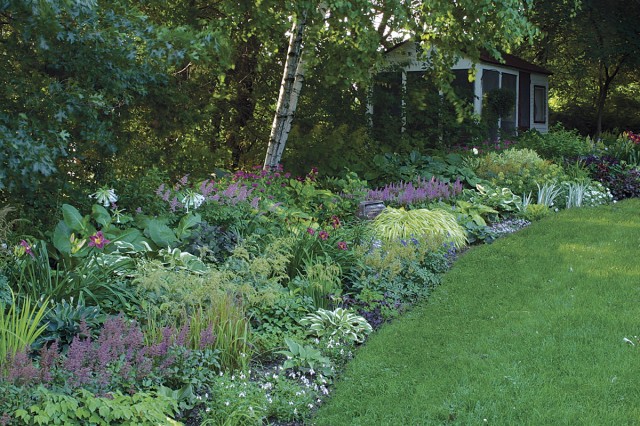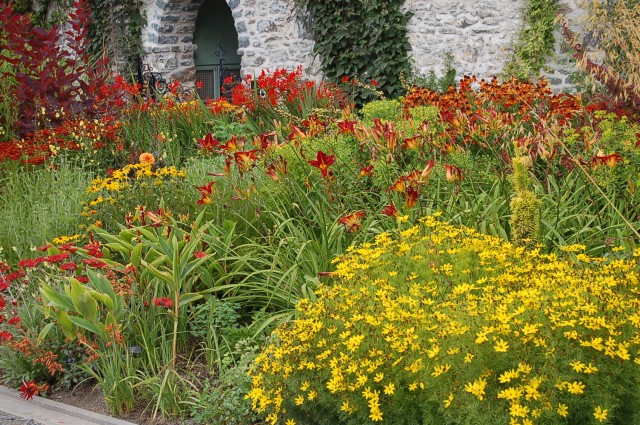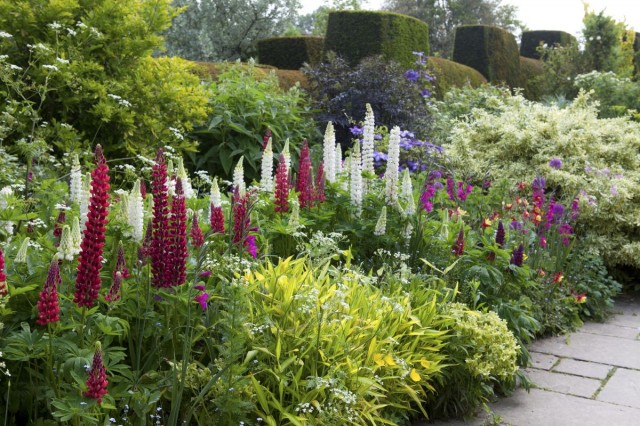How to change your garden...colour themes
Gardens of harmonious colour are not only beautiful to look at, but they also affect our mood Adding a colour theme to your garden will not only have these benefits, it really helps the gardener and designer. This is because a theme helps to narrow down the focus of the plant search by adding colour to the selection, in addition to the other conditions (amount of light, minimum temperatures, soil type, soil pH etc) that the prospective plants need to be able to cope with. With such a vast selection of plants to choose from, adding colour to the criteria will make the range of choices easier to manage. Three of the main colour themes link to the colour theory rules discussed in the previous blog, these are warm and cool themes which are associated to the analogous rule, and a single colour scheme which is the monochromatic rule. This link to the colour theory rule explains why these themes work so well.
Colours and moods/emotions have long standing associations. Major companies often choose their corporate colours because of the 'spirit' their colour can generate to people. There are many versions of colours and their particular moods, but they all have a common overriding emotion connected to them, detailed below.
- Blue - serenity and calm
- Purple - courage and wisdom
- Pink - kindness
- Red -exciting and passionate
- Orange - enthusiasm and adventurous
- Yellow - cheery and warmth
- Green - restful and peaceful
- White - uplifting and pure
Colour is such a personal choice, but our preference could be related to the link between our favourite and the feeling it invokes within us. You could use your favourite colour as the theme for a monochromatic scheme, or choose a scheme depending on whether that colour is either from a cool or warm palette.
Choosing the right colour theme for your garden can help enhance your garden. Flowers and foliage from a warm theme, particularly brighter colours, feel much closer to us, so can be used in a large garden to create a more intimate feel. Conversely, cool colours seem further away, so in a small garden they can make the space feel larger than it actually is.
It is worth remembering that purple and green can be either be a cool or warm colour depending on which is the predominant colour in the mix. A warm purple would have more red than blue, while a cool purple would have more blue than red. The same balance between yellow and blue changes what type of green you will get, either warm or cool. In addition to purple and green, pink can be cool or warm as some pinks are cool as they have blue in the mix, other pinks can have orange hues which make them warm. White can also be warm or cool, pure white tends to be cool and tones of cream are warm so can 'clash' if these whites are mixed together.
Your whole garden can be colour themed, or different areas can be themed with transitions between the area carefully co-ordinated. If you are re-planting a whole border you are able to choose the colours you wish for, but there are tricks to help with an existing planting scheme to create more harmony.
White and silver are classed as neutrals and help with transitions between different schemes, and they also help reduce any clash between warm and cool colours in the same border. They can also lessen the intense impact of a warm theme, or add highlights to a cool theme. They can be added as plants directly within the border, alternatively pots of plants 'stood' within the bed will work too.
In addition to plants, colour can be added by accessories and hard landscaping. Cushions on chairs or by painting a wall or fence will add colour instantly. And can be changed to reflect the latest colour trend, or if you get bored. The colour blue is featuring in more interior design schemes and could be incorporated in a neutral white garden for a stylish and contemporary look.
Please note that photos are courtesy of either us, or various external websites. Please click on photos and if it is from an external source, this will open in a new window.
Related Posts
By accepting you will be accessing a service provided by a third-party external to https://consiliopartnership.co.uk/

